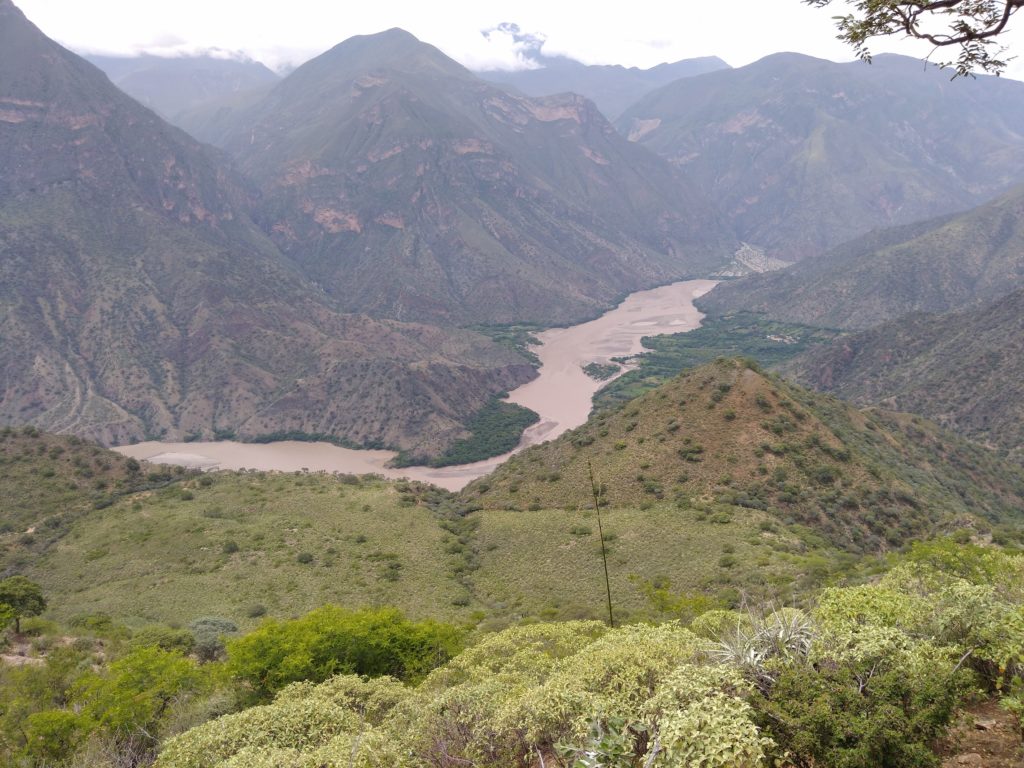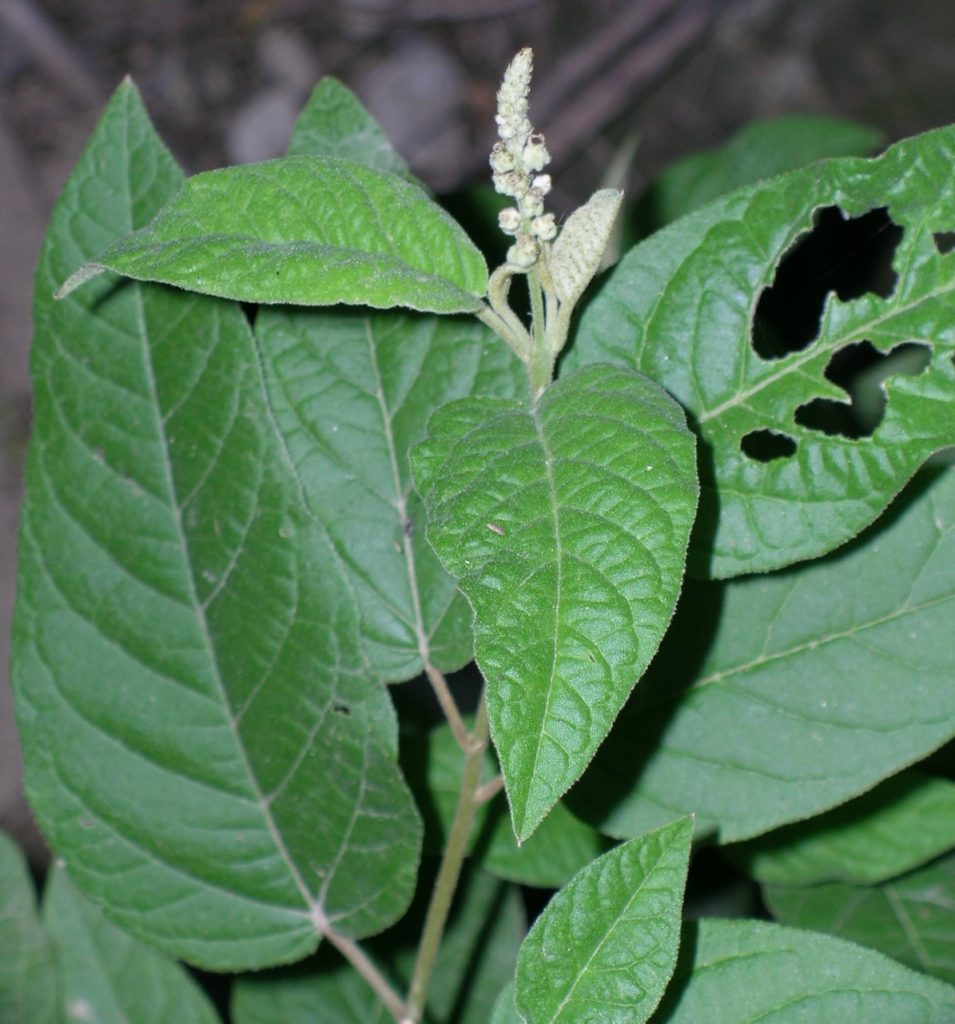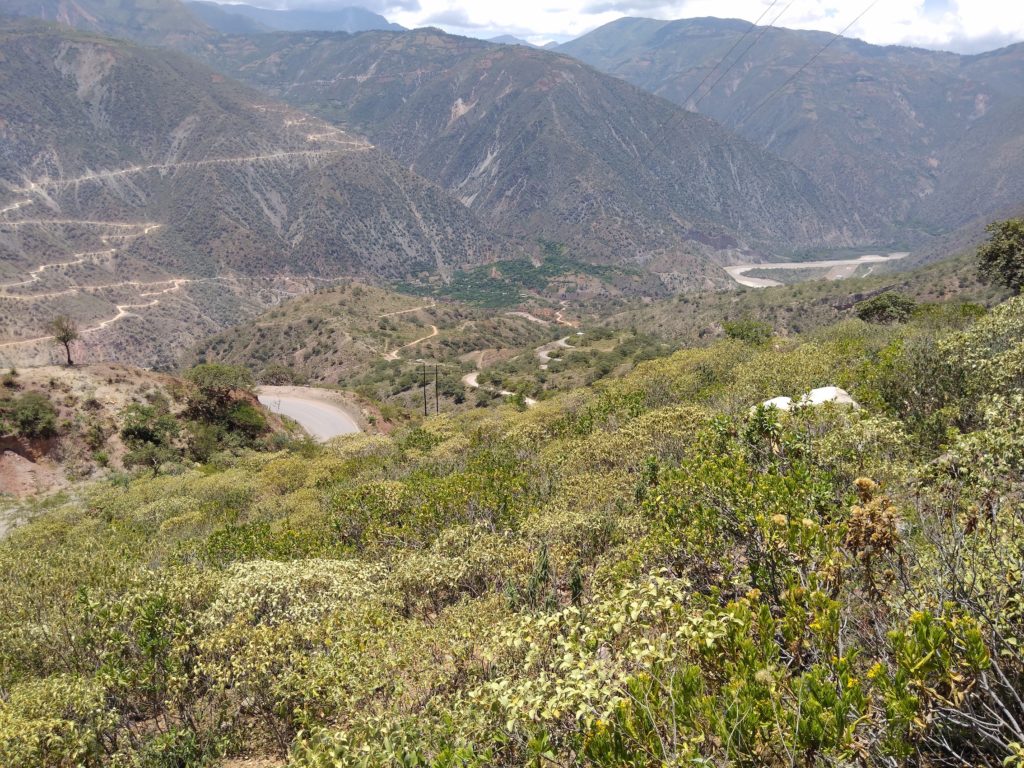
In the deep, isolated valleys of the Andes there are still many plants that have never been described by science. These valleys are hot and dry, despite the clouds clustered on the mountain tops, and full of species found nowhere else on Earth. One species new to this list is Croton maranonensis, in the Euphorbiaceae (the same family as edible cassava and castor bean).
Researchers from the Royal Botanical Garden-CSIC in Madrid in collaboration with colleagues from across Peru, Ecuador, Brazil, Spain and here at RBGE have discovered, named and described this new species to science. It is a very abundant shrub in its natural habitat along the Marañón River Valley in Peru and in arid areas across the border in southern Ecuador. Because of this distribution, the name of the species is dedicated to the dry valley of the Marañón River, literally meaning “from Marañón”.

Crotons are woody, branching shrubs found across tropical ecosystems with seasonal rainfall. Many species in valleys like the Marañón will be covered in pale scales and hairs, they will have a strong smell when the leaves are rubbed and produce clear, coloured sap from a cut stem. This new species is one of about a dozen Croton species found in the Marañón and it helps make Croton one of the most species rich genera in the valley.

While this species has only just been recognised by science, the first specimen of Croton maranonensis had already been deposited in herbaria almost a century and a half ago (145 years ago). This is consistent with the long time-lags involved in the species discovery process of many tropical plants and the need for experts to look over many specimens. This demonstrates a fact already known in biodiversity studies: some species still unknown to humanity already have specimens or samples deposited in the world’s herbaria and museums, where they “wait” patiently to be studied and named by scientists.
An unnamed species in practice goes unnoticed and ignored by science. For this reason we do not yet know much about this new species, its ecological importance, its interactions in its habitat, the possible threats to its populations, much less its possible uses for our benefit. But now, for the first time, we are able to recognise and name Croton maranonensis and the process of understanding this species can begin.
References:
Martín-Muñoz J., Silva E.C., Gonzales P., Muñoz-Sánchez Á., Cumbicus N., Goodwin Z., Meira R., Riina R. 2024. Croton maranonensis: a new species of Euphorbiaceae from the tropical inter-Andean dry valleys. European Journal of Taxonomy 947: 289– 308. https://doi.org/10.5852/ejt.2024.947.2639
Bebber D.P., Carine M.A., Wood J.R.I., Wortley A.H., Harris D.J., Prance G.T., Davidse G., Paige J., Pennington T.D., Robson N.K.B. & Scotland R.W. 2010. Herbaria are a major frontier for species discovery. Proceedings of the National Academy of Sciences of the United States of America 107 (51): 22169–22171. https://doi.org/10.1073/pnas.1011841108
Goodwin Z.A., Muñoz-Rodríguez P., Harris D.J., Wells T., Wood J.R.I., Filer D. & Scotland R.W. 2020. How long does it take to discover a species? Systematics and Biodiversity 18 (8): 784–793. https://doi.org/10.1080/14772000.2020.1751339
Marcelo-Peña J.L., Huamantupa I., Särkinen T. & Tomazello M. 2016. Identifying conservation priority areas in the Marañón Valley (Peru) based on floristic inventories. Edinburgh Journal of Botany 73 (1): 95–123. https://doi.org/10.1017/S0960428615000281
